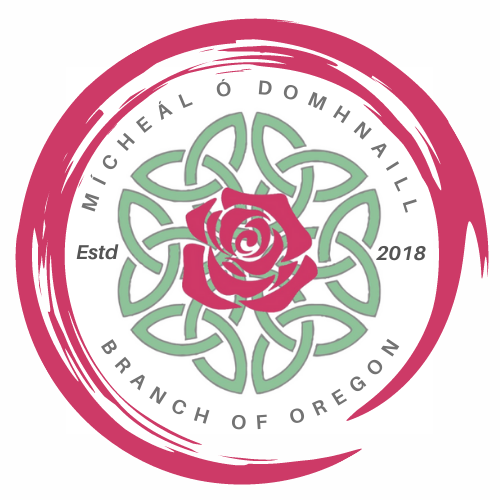St. Patrick’s Day in Portland:Local Lore and Mill Ends Park
Many folks know that Portland, Oregon is home to the world’s smallest park, Mill Ends Park. But did you know this park is alleged to house the only leprechaun colony west of the Emerald Isle?
At 2 feet across, with a total area of 452 square inches (0.00007205784 acres) Mill Ends is the smallest park in the world, according to the Guinness Book of Records, which first granted the park this distinction in 1971. The park was dedicated as a city park by the City of Portland on St. Patrick’s Day in 1976.
Mill Ends Park is named for the Oregon Journal column written by journalist, Dick Fagan, who worked for the newspaper throughout the 1940s, ’50s and 1960s. “Mill Ends means bits and pieces,” said son, Pat Fagan, “so he’d pick up a lot of quips and things that were happening in the neighborhood or in town and put those in his column.” As the story goes, Fagan looked out from his office window at the Oregon Journal, at a newly installed traffic median and saw a leprechaun digging in a hole intended for the placement of a traffic light pole. Fagan ran downstairs, across the street, and caught the leprechaun who granted him 3 wishes: to have many children (there were 5 children in the Fagan family); to have a leprechaun take responsibility for writing his column; and to have his very own park. The leprechaun gifted the hole to Fagan as his very own park.
Fagan tends to Mill Ends Park. Courtesy Oregon Hist. Soc. Research Lib., 022795
Fagan claimed the park was founded on St. Patrick’s Day in 1948. February 24, 1954 is the first mention of “Mill Ends Park” in the Oregon Journal archives: Fagan noted “Mill Ends Park was officially dedicated Tuesday morning,” after being known as such “for lo these many years.” The accurate founding date of Mill Ends Park seems to have been discovered by Scott Cook and Aimee Wade who wrote about it in the 2014 book PDX Centric. Wade also found a 1955 letter from the superintendent of parks who confirmed the entire thing was a “stunt to publicize ‘Rose Planting Week’ " dreamed up by the Oregon Journal. In fact, Mill Ends was almost named Envoy Rose Park as part of a friendly rivalry with Columbus, Ohio in 1954. Columbus was interested in claiming the title of “Rose City” for itself, but the City of Portland was having none of that, and planted an Envoy Rose in the center of what is now Mill Ends Park.
Photo originally published in the March 7, 1954 Oregon Journal with the caption: "CIVIL WAR set in recently when smallest rose garden in nation was planted in safety island in front of Journal building. Commissioner Ormond Bean (right) argues it should be named "Envoy park," while Dick Fagan (center) maintains it should be titled "Mill Ends," for his column in the Journal. George Gutfleisch, Roses for Portland head, supports Bean and "Envoy."
1955 Letter from Portland Parks and Recreation regarding the history of Mill Ends Park.
In 2021, improvements to Naito Parkway included moving Mill Ends Park 6 inches west from its original location, and adding a cloverleaf park border in honor of the resident leprechauns. Over the years, Fagan wrote consistently about Mill Ends Park in his column, covering a wide ranging assortment of events and celebrations within the park. These included the revelation that the etymology of the state name was an Irish surname, O’Regon; and the exploits of the leader of the leprechaun colony, Patrick O’Toole, an emigrant from the Connemara region of the west of Ireland only visible to Fagan himself. Mill Ends featured in the May 25, 1958 column as a meeting point for Rose Festival celebrations by fairies and leprechauns; and in 1968, an official letter from then mayor, Terry Schrunk, advised Fagan, as liaison to the residents of the park, that the city curfew extended to the leprechauns of Mill Ends Park as well.
Portlanders were and continue to be taken with the tiny park, and over the years many contributions and decorations have been made or left at the park including a tiny swimming pool and diving board for butterflies, statues, plastic dinosaurs, toy soldiers, a miniature Ferris wheel (which was brought in by a normal-sized crane), a flying saucer, rose plantings by the Junior Rose Festival Court, picnics, snail races, and annual St. Patrick’s Day gatherings in honor of the park’s founder.






